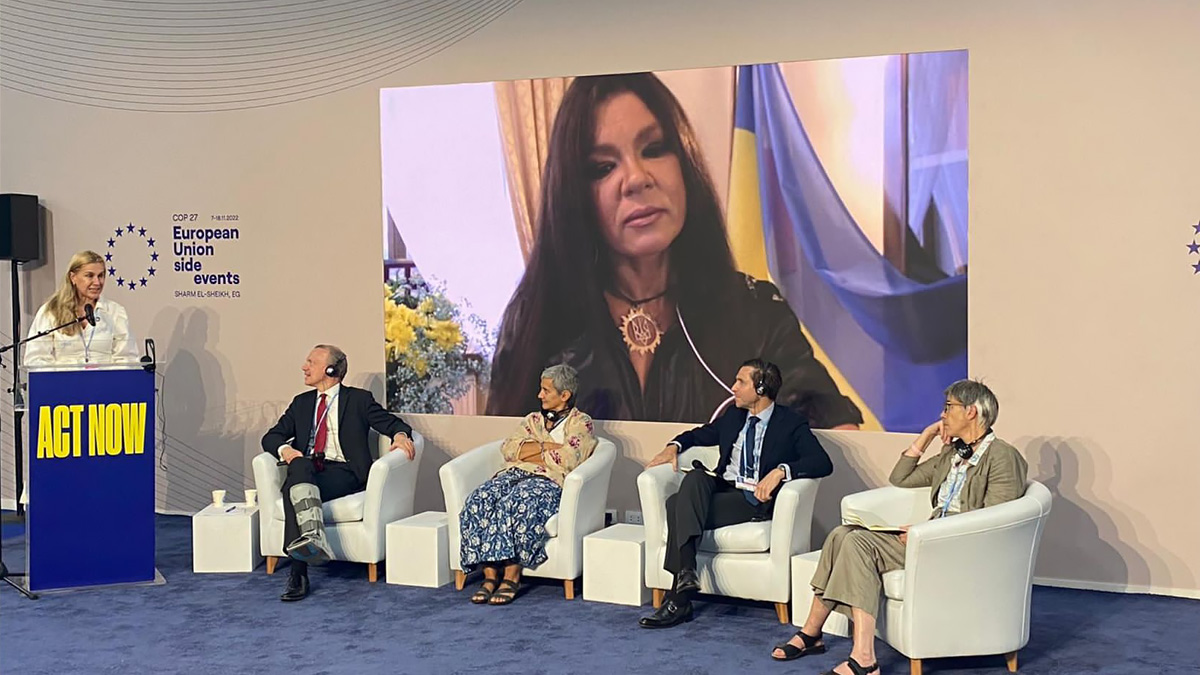News
WindEurope panel at COP27: permitting, permitting, permitting

16 November 2022
WindEurope organised a panel discussion on behalf of the EU Commission at EU Energy Day at COP27 in Egypt this week.
The topic was “how to deliver the EU goal that wind is 43% of Europe’s electricity by 2030”. The panel mainly focused on how to fix permitting but also discussed the scalability of wind energy, the coexistence of wind with biodiversity and communities, the European supply chain and non-price criteria in auctions. The speakers were EU Energy Commissioner Kadri Simson, MEP Jutta Paulus, Renewables Grid Initiative’s Antonella Battaglini, Jon Lezamiz of Siemens Gamesa and Eurovision winner and Renewable Energy Ambassador Ruslana Lyzhychko.
Wind energy already generates 15% of all of Europe’s electricity demand. The EU wants this to be 43% by 2030. This means upping our wind energy capacity from 190 GW today to 510 GW by 2030. Wind energy is highly scalable and cost-competitive. And the industry is ready to deliver these volumes.
But permitting remains the main issue – slow and complex permitting is holding back the build out of new wind farms delaying the energy transition. For wind energy the 510 GW target means that Europe needs to build 39 GW of new wind farms every year up to 2030. But Governments are not permitting anywhere close to these volumes. Almost no Member States meets the deadlines for permitting procedures. The European Commission has now proposed emergency measures to simplify and accelerate permitting. This includes clarification on what should be included in the two-year deadline for permitting new projects.
Wind energy brings a lot of economic benefits to the EU. The wind industry employs 300,000 people all over Europe and each new wind turbine generates €10m in economic activity. A big share of this value stays behind locally through local taxes or other set-ups that benefit local communities.
Wind also goes hand in hand with nature and biodiversity. The wind industry is committed to protect biodiversity. In fact, climate change is one of the biggest threats to nature and biodiversity. While renewable energy is the most efficient solution to reduce CO2 emissions. Using wind to produce energy has fewer effects on the environment than other energy sources. And the wind industry works actively to protect the local environment where wind farms are built.
Governments can support this even more in the way they set up their support schemes and auctions. The most effective way to do this is to use non-price criteria in auctions. Including qualitative criteria recognises the wider societal value that wind energy brings with e.g. the protection of biodiversity or the involvement of communities. Non-price criteria will also max out on the European industry’s strengths.
The European wind industry already is a global leader which delivers the highest quality turbines. It is crucial we keep on supporting it to stimulate even more innovation. This will facilitate necessary breakthroughs in important new technology such as fully recyclable blades, the integration of electrolysers and voltage control.
During the panel Ruslana also spoke about the current situation in Ukraine and how the Russian invasion has destroyed energy infrastructure in her country. After that she showed a video in which she introduced her special project called RenewDay for Ukraine which would help the country with energy donations to get through the winter. You can watch the full video below.

